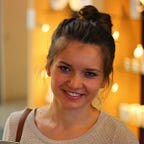Finding constellations in night photos
A selection of beautiful night photos with annotated constellations and their brightest stars
Stargazing is one of my recent favorite past time activities but it’s not easily accessible when living in a cloudy city with heavy light pollution (Bortle scale 7, see image below). Fortunately, I also love night photography so decided to engage in virtual stargazing until a trip to a dark sky site shows up on the horizon. Additionally, virtual stargazing enables observing sky from different locations, in different seasons and various light pollution levels.
It’s best to start with images which span a wide area of the sky so that multiple constellations and other interesting celestial objects (Milky Way, Messier Objects, planets) can be found. I tend to look for bright stars which form one of 88 constellations and then use a star hopping technique to localize fainter constellations.
Without further ado, scroll down to test your knowledge of constellations in the starry skies of the Northern Hemisphere.
